%2017%20Challacot.jpg)
In Manor Road, Wickhamford, there are a number of attractive houses of centuries-old appearance. Some are genuinely of considerable age whilst others are not all they seem to be. For example, Hody’s Place, was newly built in 1939, but in a much older style and Robin Cottage was changed considerably in the 1930s. The man behind the design of many of these houses was George Lees-Milne, who purchased Wickhamford Manor in 1906, together with land and other properties in the village. The pair of houses dealt with in this article are known as Leasowe and Challacot, (36 and 38 Manor Road, respectively).
Properties were recorded on this site from the 1841 census up until that of 1901, but they were not recorded in 1911 or 1921. They had, by this time either fallen into disrepair or been partially or totally demolished. The present pair of houses were built by Lees-Milne in 1934, initially to accommodate some members of his staff at the Manor.
Nineteenth-century occupants of the old cottages
Who was living at this site in 1841 cannot be ascertained with any certainty, but Thomas Howes and his family were living in the village street and they were still there in 1851 (see below). A family of four in the next property listed in 1841 was that of Thomas Bennett and these two families may have been the occupants of the cottages on the site of the present-day Leasowe and Challacot. The two cottages were recorded in the census from 1851 to 1901, but which occupants were in which cottage is not easily determined. The following list of tenants is based on the assumption that one cottage was larger than the other (‘Cottage A’), and that the smaller cottage (‘Cottage B’) deteriorated more quickly than the other.
Cottage A - At the 1851 census, Thomas Howes and his family lived in one cottage. Thomas Howes was an agricultural labourer, born in Bengeworth and he and his wife, Hannah, had three children, aged 9 to 11. They were still in the same cottage in 1861 and 1871. By 1881, Thomas Howes had died and his widow, Hannah, was still in occupation. She was now 73, but recorded in the census as an agricultural labourer and she lived until 1889. Living with her, in 1881, was a grandson and Oliver Dunn, a lodger. In 1891, one cottage had a large family living in it and this was probably the one previously tenanted by the Howes family. The new tenants were, David Hampton, his wife and five children. By 1901, one cottage was occupied by Rebecca Staite, her four children and a visitor. It seems likely that this was the one where the Howes and Hampton families had been tenants.
Cottage B - In 1851, James Robbins, an agricultural labourer, and his wife, Elizabeth, both aged around 60, lived in one cottage. They were both born in Chipping Campden. They had moved on by 1861 and that cottage was occupied by Edward Newbury (b. Childswickham), his wife, Sarah and young daughter, Elizabeth. He was a farm labourer and shepherd and she was a gloveress. In 1871, this property was unoccupied, which could indicate it was in bad repair. In 1881, one cottage was occupied, by Albert Walter and his wife, Rhoda. He was also an agricultural labourer, and had been born in Devon. Although both were aged around 30, they had no one else living with them. In 1891, Oliver Dunn, (who had been lodging with Hannah Howe in 1881) lived alone in one cottage, so it may not have been fit for a family. In 1901 it was unoccupied.
After 1901
There is no mention of either cottage on the site of Leasowe and Challacot in the 1911 census, nor in the Valuation Survey, which was undertaken Nationally between 1910 and 1915. The records for the Survey in Wickhamford are dated between 1912 and 1915. No buildings were recorded on the site of the cottages in the 1921 census. The present pair of houses were constructed in the mid-1930s.
Occupants in 1939
There are two sources of information from 1939, the Electoral Register and the 1939 Register, which recorded all UK residents at the outbreak of World War 2.
In the 1939 Register, Leasowe already had that name, but the name Challacot was not mentioned for the other half of the semi-detached houses. It is almost certain that George Lees-Milne gave these properties their names and that ‘Challacot’ was just omitted from the Register entry.
In the 1939 Register, Leasowe was occupied by Marjorie Burlingham (b. 1913) and Nora Armstrong (b. 1887). They were both married and carried out “unpaid domestic duties”. Nora was Marjorie’s mother. Marjorie was the wife of Richard Geoffrey Burlingham, who served in the Army, saw service in N. Africa and was a Lt-Colonel by the end of the War. They had two children born whilst living at Leasowe – Susan in 1940 and Rosalind in 1944. Richard Burlingham stood for election to Evesham Borough Council in April 1949, when his address was White Lodge, Bengeworth. He became Mayor of Evesham during 1960-62.
In 1939, Challacot was occupied by John and Lily Sheppard, he being an “Agricultural Sundries Salesman”. He had been born in Honeybourne and had served in the Machine Gun Corps in World War 1.Neither of the house’s resident’s names were recorded in the 1939 Electoral Register, so both must have taken up residence after that was compiled early in the year. The house names Leasowe and Challacot do not appear on the Electoral Register. (There are two people recorded as living in ‘Main Street’ – Mary Richmond and Linda Rose Saunders and either, or both, may have been resident in the properties under discussion here, but there is no proof of this.)
George Lees-Milne died in 1949, having sold Wickhamford Manor in 1947. This would possibly have been about the time that Leasowe and Challacot would have been put on the market.
Other buildings changed by George Lees-Milne
Examples of two other buildings changed by George Lees-Milne in Manor Road, Wickhamford are shown below.
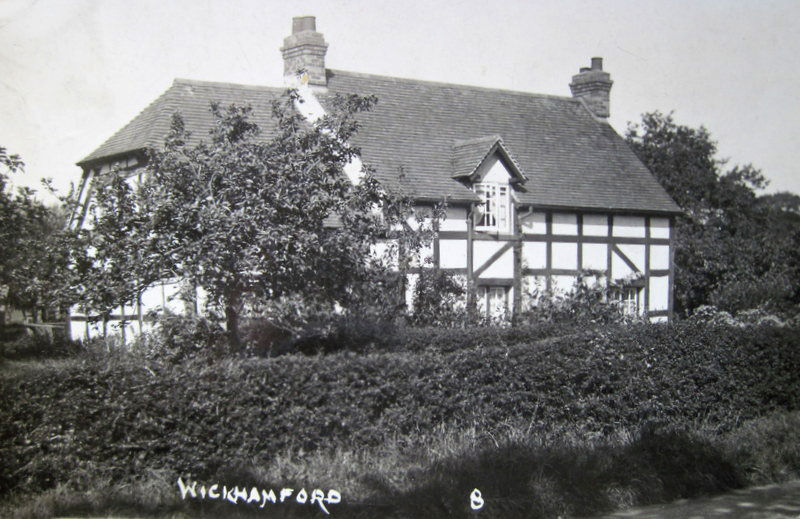
%206_Robin_IMG_7443.jpg)

%20Hodys%20Place-001.jpg)
Old cottages replaced by a more modern building
Other changes in the appearance of properties in Manor Road can be seen in the photographs below. In the first case, genuine old cottages replaced by a more modern building. Those cottages may be similar to those demolished on the site of Leasowe and Challacot. In the other two examples, modifications are shown to older properties.
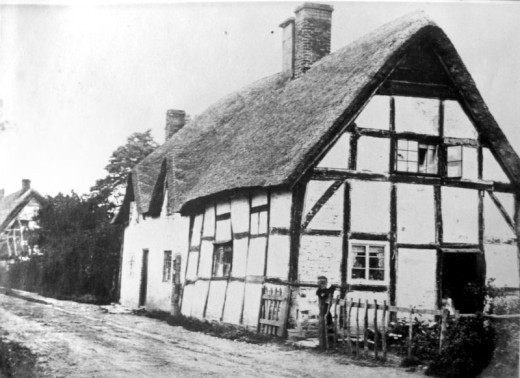
%205a_IMG_7445.jpg)
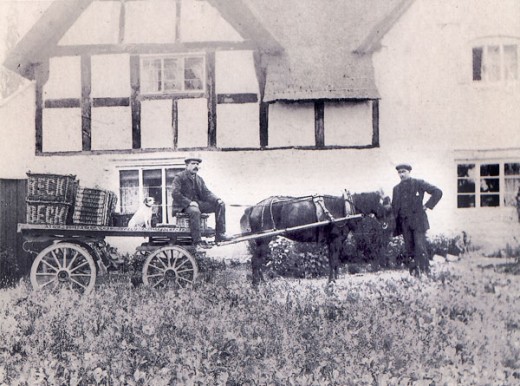
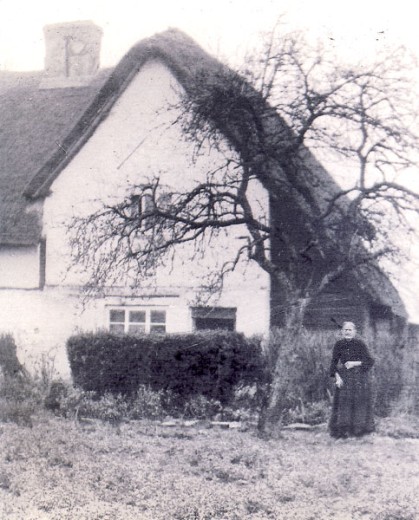
%2015_GreyG_IMG_7434.jpg)
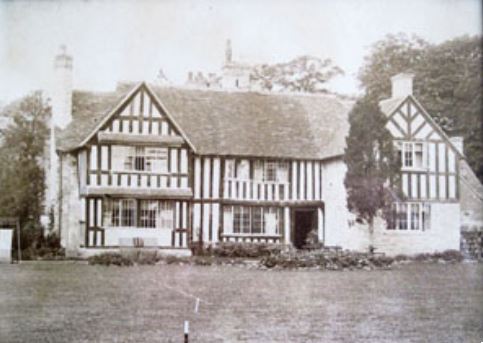
%20Wickhamford%20Manor%202.jpg)
Old-looking houses that are genuinely old
Finally, it should be pointed out that there are a few houses on the lower part of Manor Road where the old appearance is genuine! These are Corner Cottage, Elm Farm, Old Vicarage, Weathervane Cottage and Brookfield.
%20Corner%20Cottage.jpg)
%20Elm%20Farm%202.jpg)
%20Old%20Vicarage.jpg)
%20Weathervane%20Cottage.jpg)
%20Brookfield%20Cottage.jpg)
Tom Locke – April 2024
